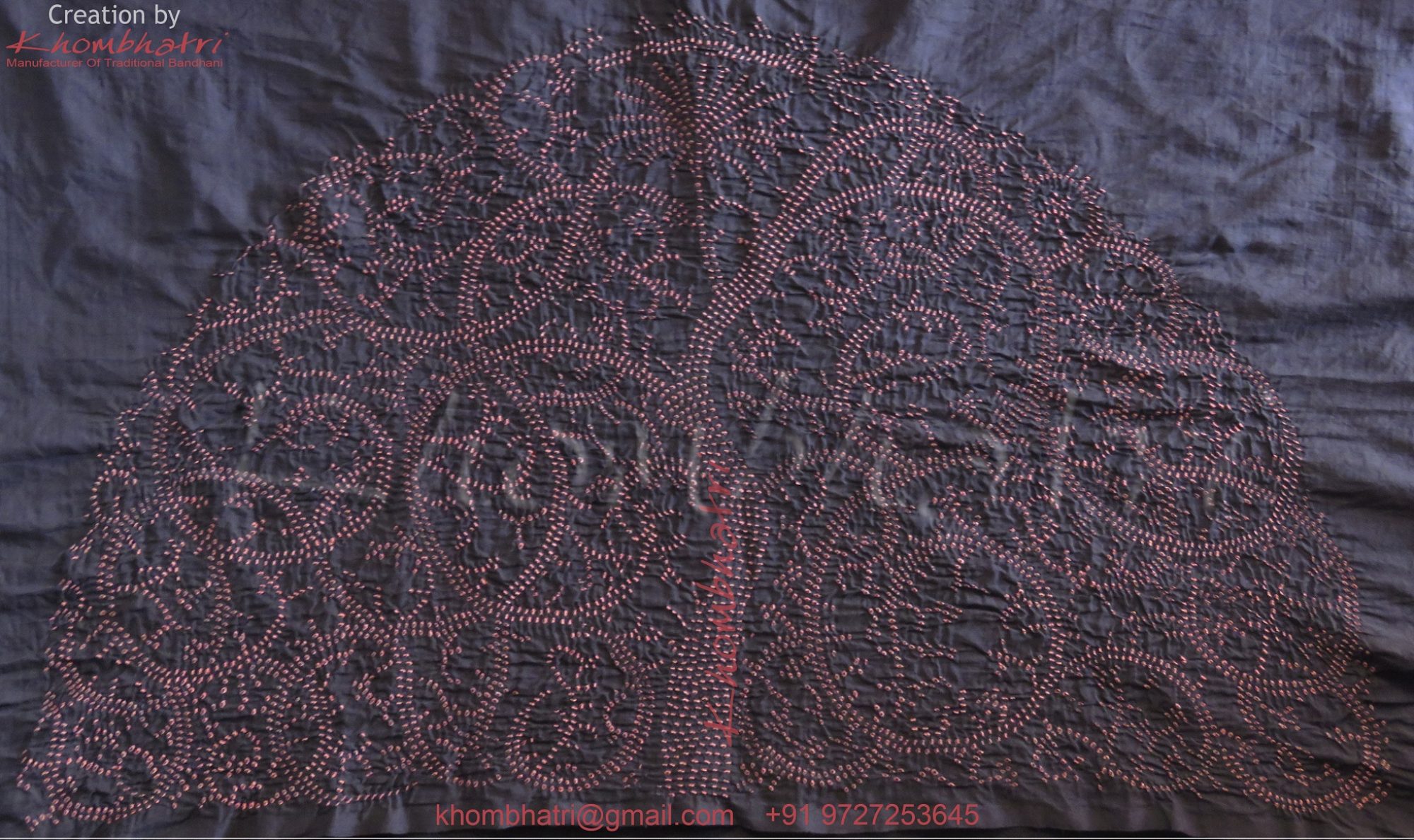KHOMBHI: A Unique Form of
BANDHANI, Also Known as
GHARCHOLAKHOMBHI is a distinctive type of
BANDHANI, also referred to as
GHARCHOLA in some regions. It holds special significance in marriage ceremonies, where it is traditionally worn by brides on their heads in certain Hindu and Muslim communities. In these cultural practices, the
KHOMBHI is considered an essential part of bridal attire, symbolizing purity, tradition, and good fortune.
The Origin and Craft of KHOMBHATRI
The term KHOMBHATRI is derived from the word KHOMBHI, which refers to the skilled artisans who have historically crafted these intricate garments. KHOMBHI, like other forms of BANDHANI, follows the age-old technique of tie-dyeing, but with distinct patterns and motifs that set it apart. Just as BANDHANI includes various styles such as “Shikari,” “Chandrokhani,” “Aambadad,” and “Bawanbhat,” the KHOMBHI pattern has its own rich tradition and unique evolution. These different styles of BANDHANI provided the foundation upon which KHOMBHI grew and developed.
Cultural and Religious Importance
In many Hindu communities, the KHOMBHI is considered not only a cultural artifact but also an essential part of religious worship. It is believed to bring spiritual welfare, or sukniyad, and is considered mandatory during certain religious rituals and worship of deities. The KHOMBHI’s role in marriage ceremonies is also of great significance, as it is thought to bring blessings and prosperity to the bride.
Similarly, in some Muslim communities, the KHOMBHI is worn by the bride as a symbol of auspiciousness and good fortune during the wedding ceremony.
The Role of KHOMBHATRIS: The Artisans Behind KHOMBHI
The artisans responsible for creating KHOMBHI garments are known as KHOMBHATRIS. These skilled craftsmen have historically worked in rural villages, carefully dyeing fabrics using traditional methods passed down through generations. However, with the passage of time, the production of KHOMBHI has undergone significant changes. While traditional KHOMBHI garments are becoming increasingly rare, efforts have been made to bring this ancient craft into urban cities and even mega-cities, ensuring its continued relevance and survival in the modern era.
Legacy and Popularity
The legacy of KHOMBHI, also known as GHARCHOLA, was popularized by the efforts of previous generations who made this unique garment widely known and admired. Through their dedication, they earned the title of KHOMBHATRI for their expertise in creating KHOMBHI, which became a symbol of cultural pride and craftsmanship. Today, although the traditional form of KHOMBHI is not as commonly found, its historical significance and the artistry behind it continue to be celebrated.
In an effort to preserve this heritage, many KHOMBHATRIS have successfully transitioned their craft from rural villages to bustling cities, adapting the business for modern markets while staying true to the art’s traditional roots.
